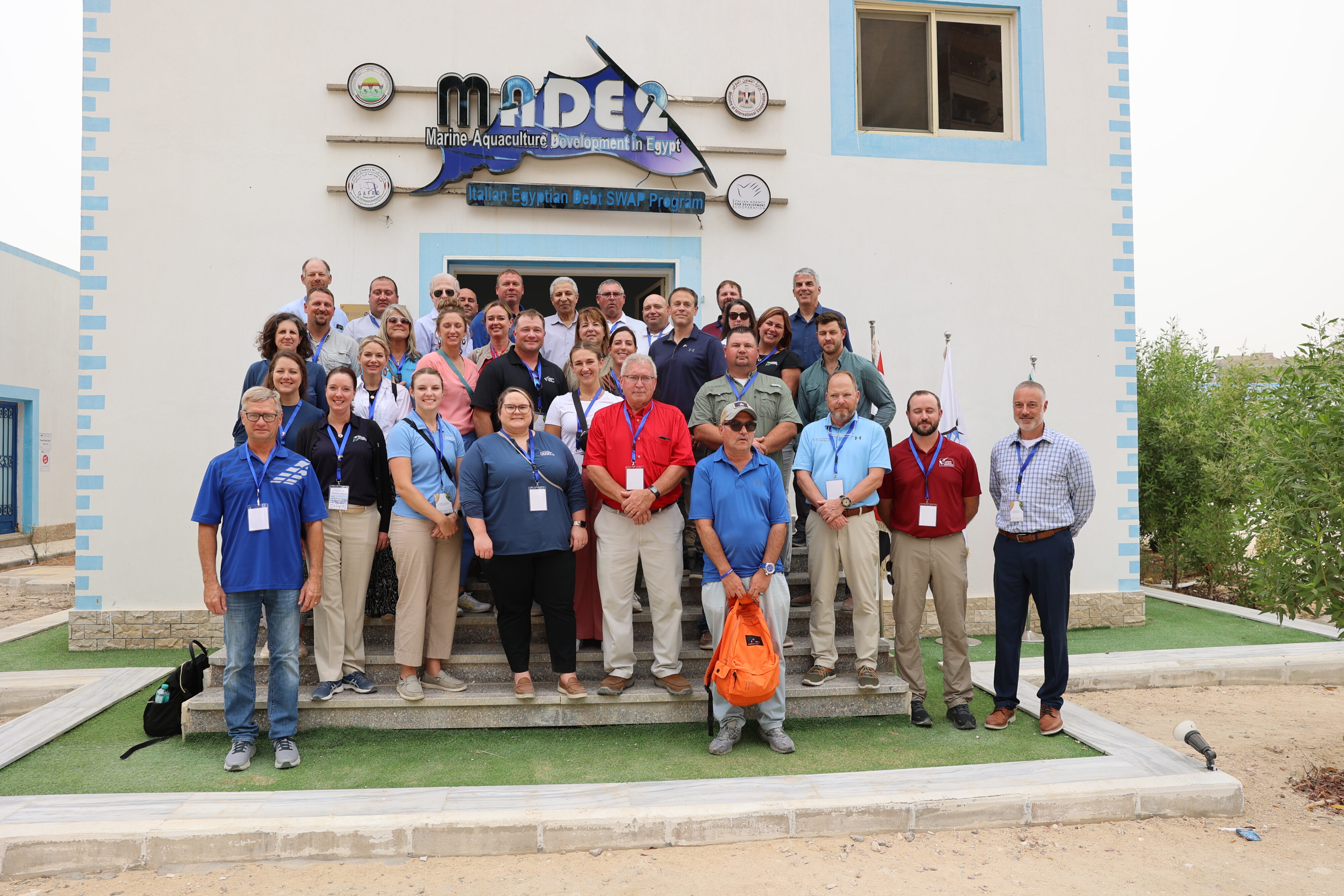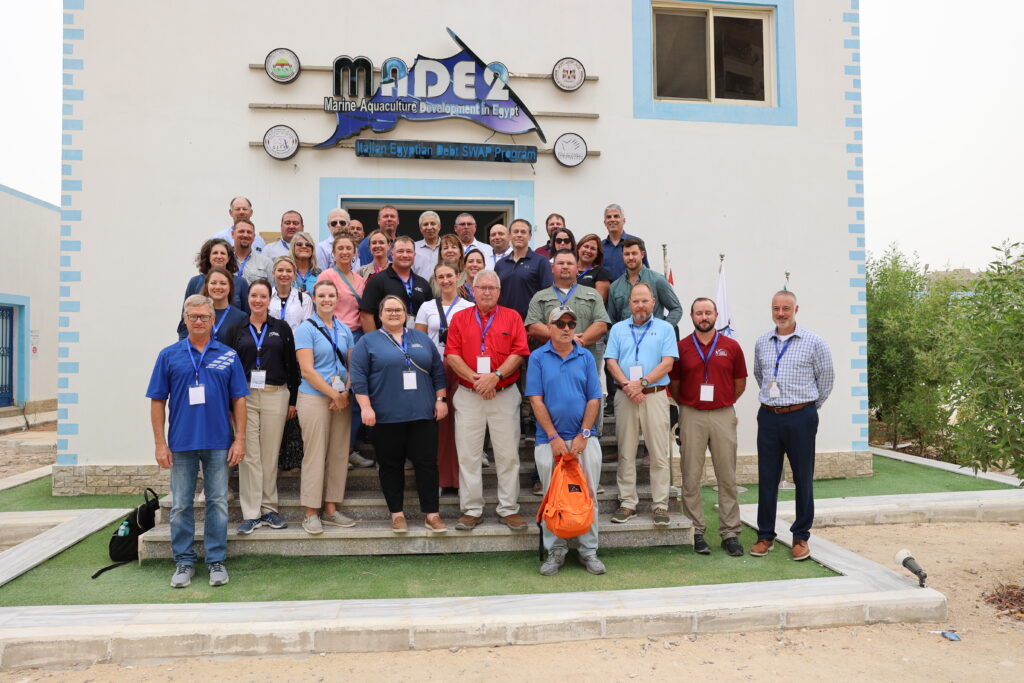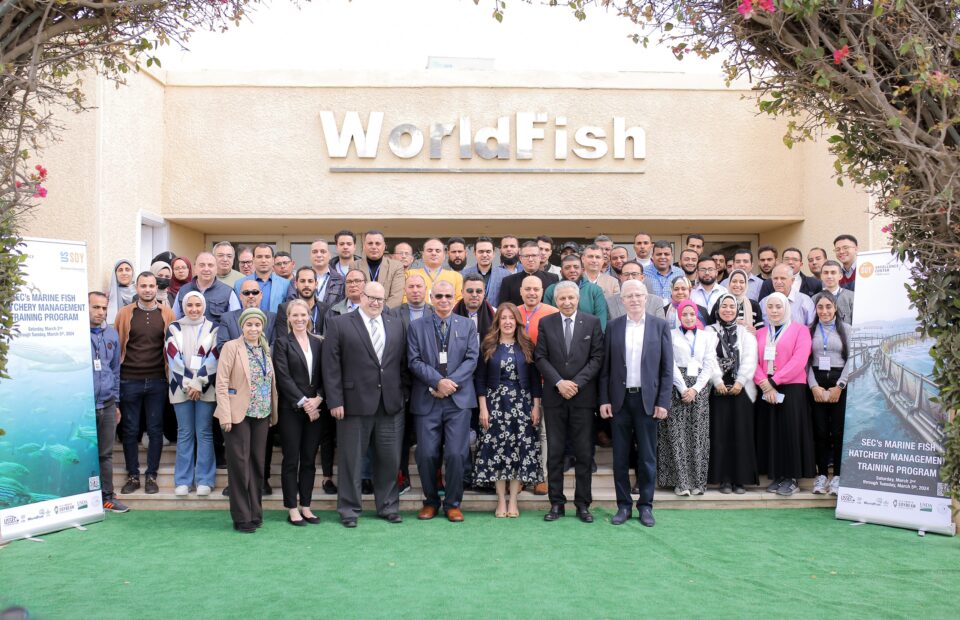
For 22 years, USSEC has worked alongside Egyptian agriculture and aquaculture stakeholders to foster growth in their country. As the Egyptian economy expands and the population turns to protein, U.S. Soy is providing solutions to support those industries. U.S. soybean farmers, staff and industry alliance partners recently visited Egypt to witness the role U.S. Soy plays in this important market. The delegation included members from Kansas, Kentucky, Illinois, Indiana, Iowa, Minnesota, Missouri, Nebraska, New York, Ohio, and South Dakota.
The trade mission’s goal was to understand the ongoing efforts and opportunities for U.S. Soy in Egypt’s animal and aquaculture industries. The Egyptian poultry industry has faced headwinds because of global inflation, currency turmoil and increasing feed costs. Nevertheless, Egypt’s poultry producers have achieved 100% self-sufficiency and are exporting to several other countries. There is an opportunity for strong and continued growth in poultry and dairy production, driven mainly by poultry and dairy consumption in the region.
Meanwhile, aquaculture in Egypt has seen significant growth due to a variety of reasons including development of inland fisheries, expansion of fish farming projects and growth of hatcheries. Egypt’s aquaculture sector, which is a leader in Africa and ranks sixth globally, is projected to see a 46% increase in feed demand by 2025.[1] More opportunity is on the horizon with in-pond raceway systems to improve aquaculture profits and water use.
The trade mission agenda included visits to Alexandria K21 Marine Farm & Hatchery and Sadat City Feed Mill facilities to give the delegation a firsthand experience of the latest technologies and practices being employed in feed and seafood production. The innovative approaches observed among these stakeholders is a testament to the country’s plans to increase fish production to 3 MMT by 2025.[2]
Coinciding with the trade mission were Soy Excellence Center (SEC) Middle East and North Africa (MENA) Regional Advisory Council (RAC) meetings and training programs. SEC MENA, with its basic and intermediate courses in aquaculture and poultry, continues to sharpen skills and raise awareness of sustainable practices to boost productivity and efficiency.
The trade mission group joined the SEC at WorldFish Center in Abbassa as they hosted the SEC’s 100th training program to engage the cohort in on-site learning about fish trade and export opportunities. The visit culminated at Cairo University to celebrate the 101st SEC cohort for poultry training production. These crucial SEC programs continue to nurture early-to-mid career protein professionals throughout the U.S. Soy value chain.
Against the backdrop of iconic Egyptian pyramids, the trade mission was an excellent opportunity to collaborate and engage with stakeholders in this key market.
This story was partially funded by U.S. Soy farmers, their checkoff and the soy value chain.

[1] FAO report: https://apps.fas.usda.gov/newgainapi/api/Report/DownloadReportByFileName?fileName=An%20Overview%20of%20the%20Aquaculture%20Industry%20in%20Egypt%20_Cairo_Egypt_02-11-2022.pdf
[2] Same as above
